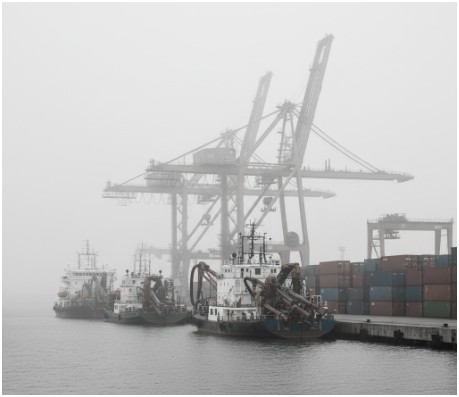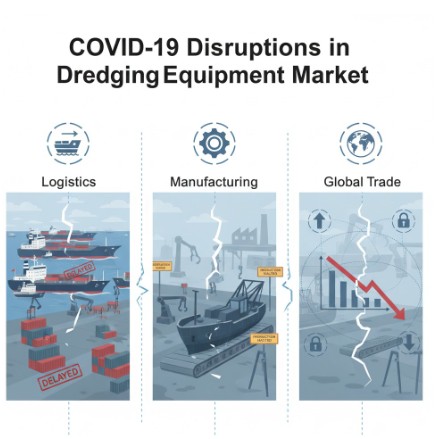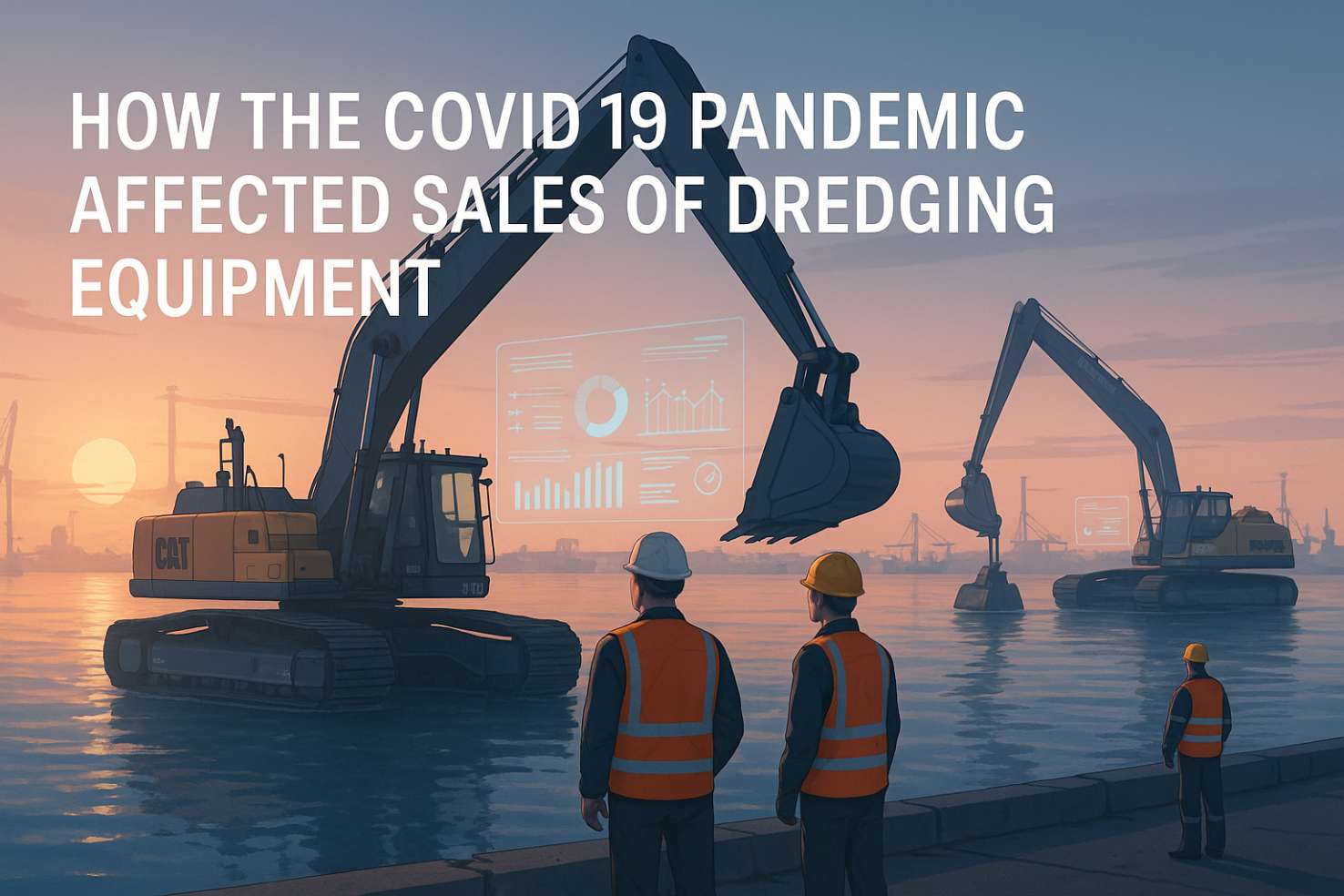I still remember the eerie quiet of the ports back in 2020. I used to visit one of our local harbors regularly for a project, and the silence there was surreal — no roaring engines, no cargo being hauled, no dredging boats in motion. That’s when it hit me just how deeply the covid 19 pandemic affected sales of dredging equipment and disrupted an industry that usually runs nonstop.
What was once a sector driven by global trade, coastal development, and offshore energy suddenly came to a standstill. Let’s unpack how it all unfolded — and how the industry managed to dig itself out (pun intended).
Why Did Dredging Equipment Sales Drop So Suddenly During the Pandemic?

When the pandemic first hit, it felt like someone pulled the plug on every moving part of the maritime world. Lockdowns froze international logistics, and dredging manufacturers couldn’t get essential raw materials or components.
Production lines went silent. Deliveries stalled. Even simple spare-part shipments got stuck mid-transit.
Without materials, manufacturers couldn’t build new machines, and without machines, ports couldn’t proceed with planned expansions or maintenance. It was a domino effect that crippled equipment suppliers worldwide.
And that’s just the start. Dredging companies also struggled to operate under strict health regulations. Workers couldn’t board vessels, surveys were delayed, and essential maintenance — including dry-docking and repairs — was postponed indefinitely. Many fleets sat idle, gathering rust instead of contracts.
How Did the Global Trade Slowdown Deepen the Crisis?

One of the biggest reasons the covid 19 pandemic affected sales of dredging equipment was the collapse in trade and marine activity.
Ships weren’t moving, exports dropped, and oil and gas exploration slowed dramatically. The mining sector also went into survival mode. With fewer vessels entering ports, the demand for dredging services — and by extension, dredging machinery — fell off a cliff.
Financially, things looked grim. Governments shifted priorities to health emergencies, and investors froze capital meant for port upgrades or coastal protection. I remember hearing from colleagues that even large contracts were shelved indefinitely. For many port authorities, new dredgers were simply not in the budget.
Were There Any Silver Linings Amid the Chaos?

Surprisingly, yes — though they were small pockets of relief.
With fewer vessels at sea and ports operating below capacity, some areas took the opportunity to perform maintenance dredging on channels, berths, and harbor basins. These projects, although limited in scope, allowed certain local dredging companies to stay afloat when new project work disappeared.
This phase also forced companies to rethink efficiency. Many began exploring automation, digital monitoring, and remote operation tools to minimize manpower risks. The crisis turned into a lesson in resilience — one that reshaped the industry’s mindset for good.
How Did the Industry Recover After the Pandemic?
The recovery didn’t happen overnight. But once vaccines rolled out and restrictions eased, the world began to move again — literally. Ports reopened, trade routes revived, and investment started flowing back into maritime infrastructure.
According to industry data, the dredging market’s turnover (excluding closed regions) grew by nearly 10% in 2021 compared to 2020. That was the first big sign of life after months of uncertainty.
Projects for land reclamation, coastal defense, and port expansion — especially in Asia-Pacific regions like China and India — roared back into action. Demand for dredgers, pumps, and excavators surged again as economies restarted and governments doubled down on long-term maritime projects.
What Lasting Changes Did the Pandemic Bring to Dredging Operations?
If you ask me, one of the biggest transformations is technological. The pandemic accelerated the digital shift that was already creeping in.
Now, companies rely heavily on automation and real-time data systems. Remote monitoring has become standard for dredging fleets, allowing engineers to assess performance without being on-site. This not only saves time but also reduces exposure to labor shortages.
Another long-term shift lies in supply chain resilience. Many firms learned the hard way that over-dependence on a single supplier or region can paralyze operations. Since 2021, there’s been a clear move toward diversification — sourcing components locally or from multiple regions to mitigate risk.
The industry also became more proactive about sustainability, integrating electric and hybrid dredgers into fleets to cut emissions while meeting stricter environmental standards.
How Can Dredging Companies Prepare for Future Global Shocks?
The pandemic taught us that flexibility isn’t optional — it’s survival.
If I were to outline a few steps every dredging company should consider, they’d include:
- Build Redundant Supply Chains – Partner with multiple suppliers and maintain local inventory buffers.
- Invest in Automation – Remote-controlled systems, autonomous dredgers, and predictive maintenance tools can reduce human dependency.
- Diversify Services – Balance between capital dredging, maintenance, and environmental restoration projects.
- Plan Financially for Emergencies – Maintain liquidity to weather delays or budget cuts during global crises.
Those who adapted fast after 2020 not only survived but are now thriving as the maritime sector bounces back.
FAQs About How the COVID 19 Pandemic Affected Sales of Dredging Equipment
1. What was the biggest challenge the dredging industry faced during COVID-19?
The most significant challenge was supply chain breakdown. Manufacturers couldn’t access components, and dredging firms couldn’t deploy manpower due to travel restrictions, which stalled both production and operations.
2. Did any sectors benefit from the slowdown?
Yes. Ports used the lull in global traffic to perform overdue maintenance dredging, ensuring smoother operations when trade resumed.
3. How did the pandemic change the technology used in dredging?
It fast-tracked digitalization and automation. Many companies now use sensors, remote-monitoring systems, and AI-based tools to operate efficiently with smaller teams.
4. What drives the market’s long-term recovery?
The rebound is fueled by rising maritime trade, urban land reclamation, coastal protection, and offshore renewable energy projects — all requiring consistent dredging work.
What’s the Future Outlook for the Dredging Equipment Market?
Today, the industry is stronger, smarter, and more self-reliant than it was before 2020. The covid 19 pandemic affected sales of dredging equipment severely in the short term, but it also triggered a technological awakening and strategic transformation that reshaped global operations.
From digital dashboards to eco-friendly dredgers, the sector is proving that resilience and innovation go hand in hand. The ports may have gone silent for a while — but now, they’re buzzing louder than ever.









